Grasshoppers
Titanium Teammate
Today, we conducted further Thin-Layer Chromatography (TLC) analysis on specimens of wild Phalaris aquatica and Phalaris canariensis. The results from the Phalaris aquatica samples revealed the presence of N,N-DMT and 5-MeO-DMT within the expected range, consistent with our previous observations of this particular wild accession.
However, the findings from the Phalaris canariensis samples were unexpected. The TLC spot corresponding to DMT retention factor (RF) did not exhibit the characteristic patterns associated with N,N-DMT, 5-MeO-DMT, or 5HO-DMT, leaving us puzzled at this juncture.
The TLC plate depicting these results is presented below: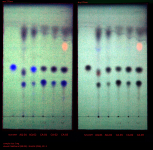
However, the findings from the Phalaris canariensis samples were unexpected. The TLC spot corresponding to DMT retention factor (RF) did not exhibit the characteristic patterns associated with N,N-DMT, 5-MeO-DMT, or 5HO-DMT, leaving us puzzled at this juncture.
The TLC plate depicting these results is presented below:


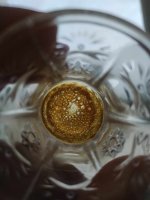
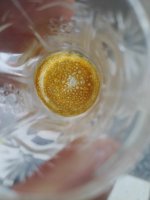

 flashy colours and morphing objects. Starting to feel like DMT.
flashy colours and morphing objects. Starting to feel like DMT.

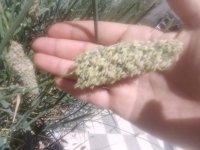

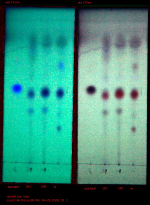
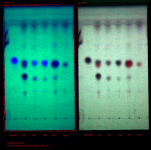

 ]
]